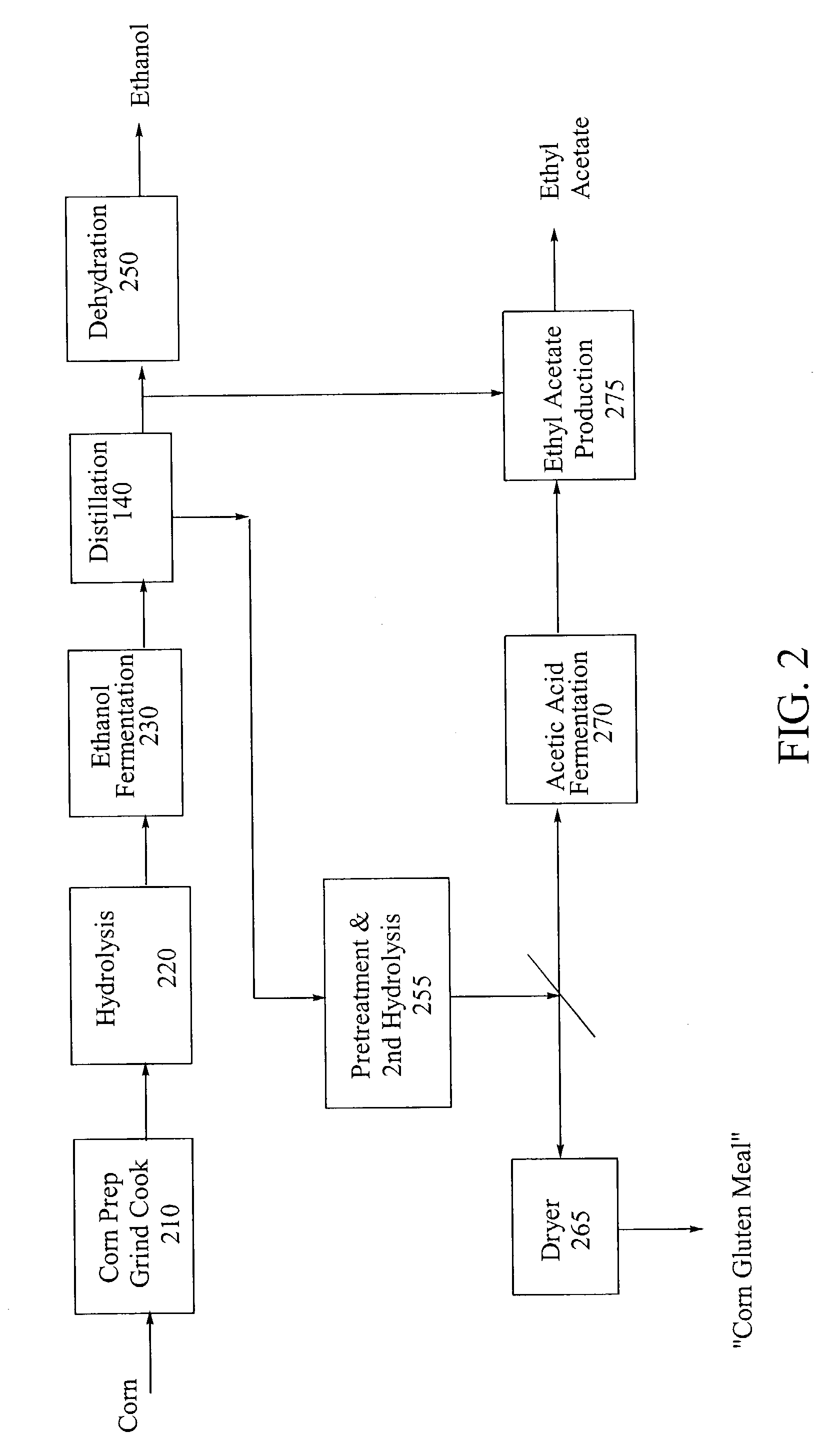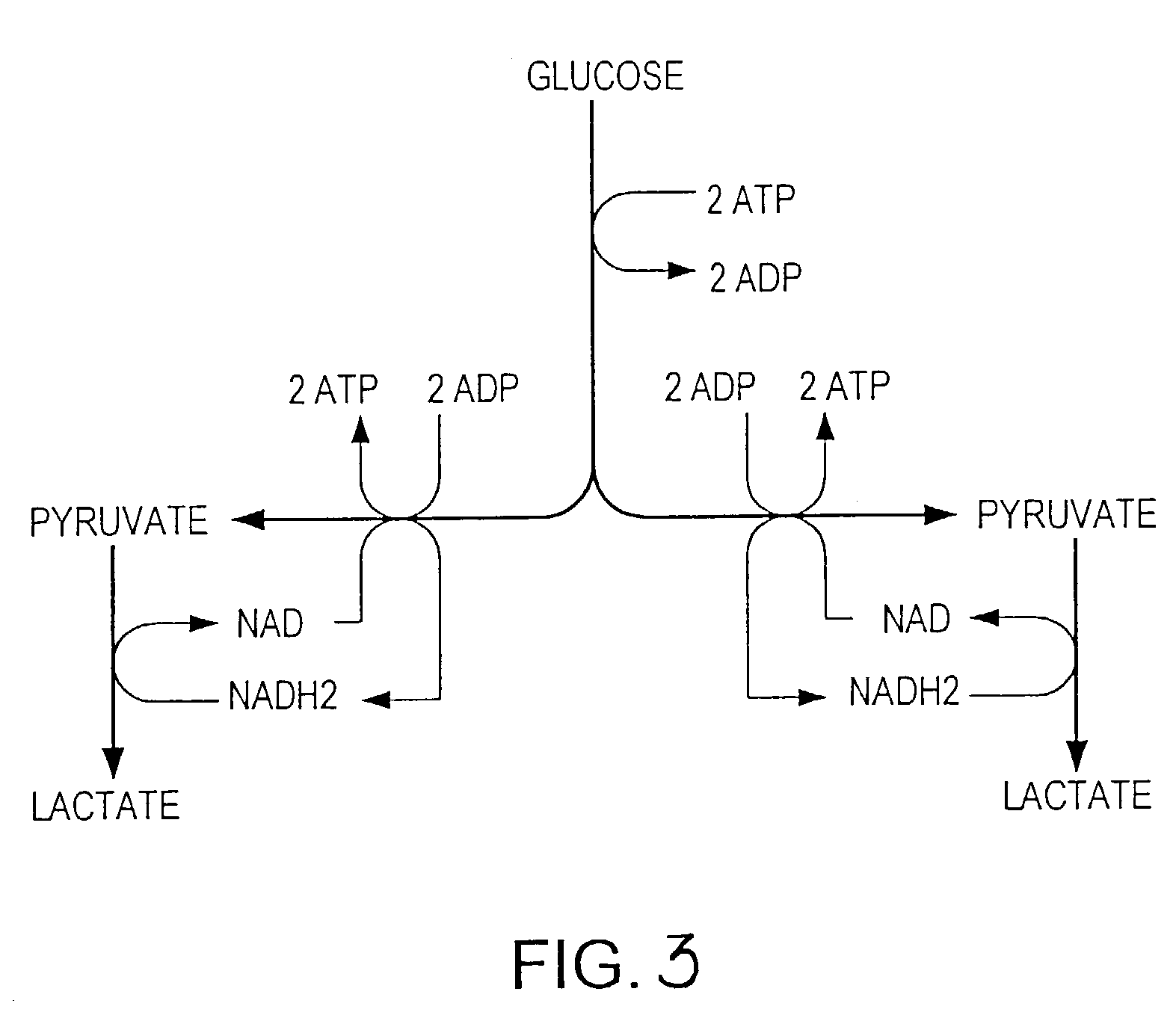Process for producing ethanol from corn dry milling
a technology of dry milling and ethanol, which is applied in the direction of biofuels, organic chemistry, fermented solution distillation/rectification, etc., can solve the problems of limited export markets, severe oversupply conditions, and utilization of ddgs, and achieve high conversion
- Summary
- Abstract
- Description
- Claims
- Application Information
AI Technical Summary
Benefits of technology
Problems solved by technology
Method used
Image
Examples
Embodiment Construction
[0021]One embodiment of the process of the present invention is a unique process for the production of ethanol based on dry milling of corn. A conventional ethanol production process based on the dry milling of corn is shown in FIG. 1. The present invention uses the bottoms fraction from distillation of ethanol in the process as a carbohydrate and nitrogen source in a process that is described in more detail in U.S. patent application Ser. No. 09 / 720,930 to make an integrated ethanol production process. A key feature of this approach is the production of acetic acid from various sugars using an anaerobic acetogenic bacterium.
[0022]A preferred embodiment of the present invention is illustrated in FIG. 2. The conventional steps of corn preparation 210, hydrolysis 220, ethanol fermentation 230, distillation 240, and dehydration 250 are shown. Also shown in FIG. 2 is a bottoms fraction from the distillation is subjected to a pretreatment and second hydrolysis step 255, utilizing cellula...
PUM
| Property | Measurement | Unit |
|---|---|---|
| temperature | aaaaa | aaaaa |
| boiling point | aaaaa | aaaaa |
| volume | aaaaa | aaaaa |
Abstract
Description
Claims
Application Information
 Login to View More
Login to View More - R&D
- Intellectual Property
- Life Sciences
- Materials
- Tech Scout
- Unparalleled Data Quality
- Higher Quality Content
- 60% Fewer Hallucinations
Browse by: Latest US Patents, China's latest patents, Technical Efficacy Thesaurus, Application Domain, Technology Topic, Popular Technical Reports.
© 2025 PatSnap. All rights reserved.Legal|Privacy policy|Modern Slavery Act Transparency Statement|Sitemap|About US| Contact US: help@patsnap.com



